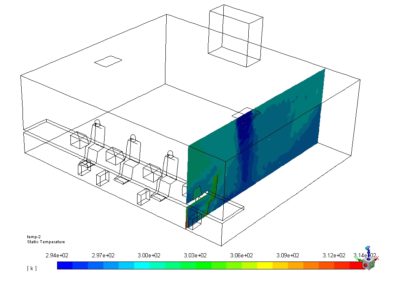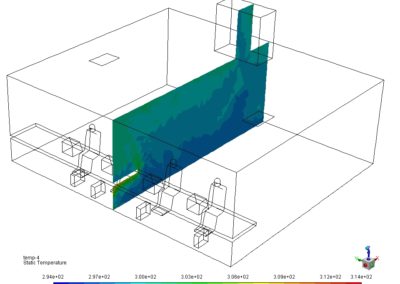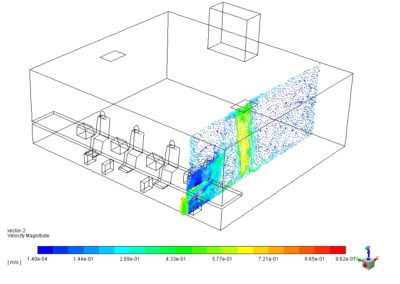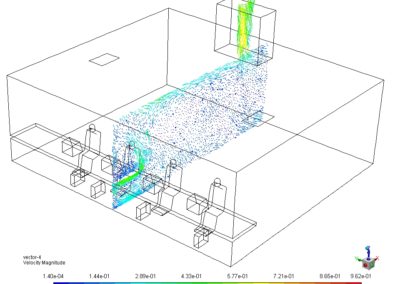Office Ventilation Simulation for Thermal Comfort
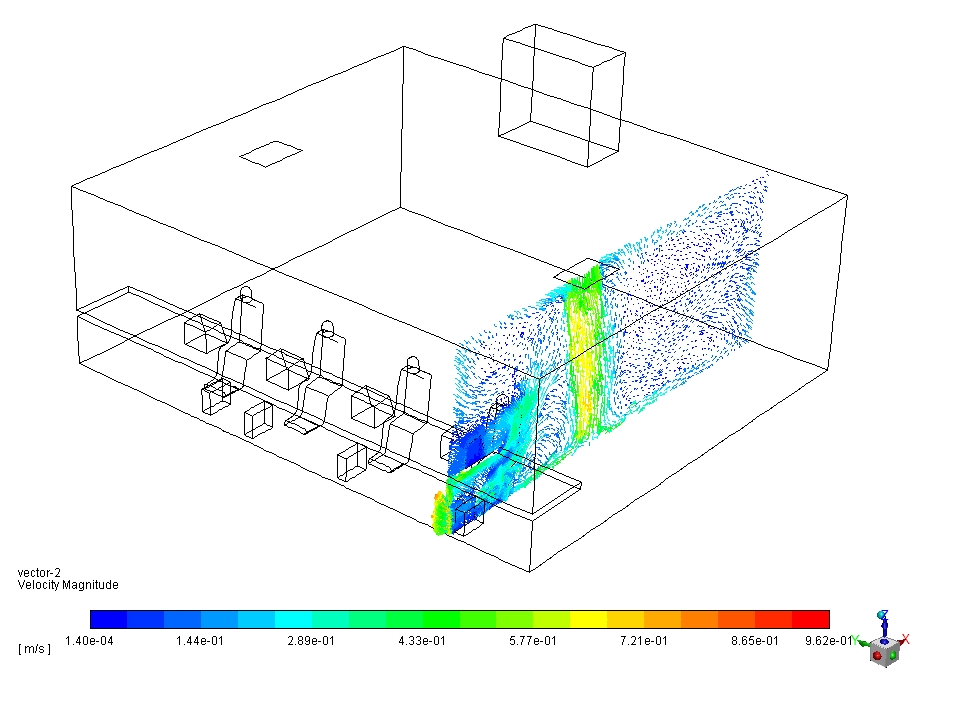
Steady-state temperature profile sweep of a proposed office space design to inform a thermal comfort study for compliance with ASHRAE Standard 55
As someone who struggled with subjects such as fluid mechanics and heat transfer as an undergraduate, I am particularly proud to say that I have finally mastered these concepts enough to produce real and tangible results-driven analysis with advanced tools such as computational fluid dynamics packages. During my work in the HVAC industry within Myanmar, I noticed that there was a pressing need for advanced predictive design and simulation. This was noticeable to me because of high retrofit costs resulting from frequent customer complaints to inexperienced firms, wasted energy from sub-optimal design, and an inability to natively design ventilation for high-precision facilities such as data centers and hospital operating rooms. I saw this situation as a challenge and an opportunity, and subsequently started learning CFD from an introductory professional education course offered by ASME. After successfully passing the course, I then utilized various resources such as textbooks and the Advanced Modeling and Simulation Seminar Series from NASA in order to increase my in-depth understanding of the subject. I eventually experimented with using CFD for various HVAC applications, and worked closely with my team to implement my first CFD study.
The current simulation shown was produced in ANSYS Fluent, and is part of a thermal comfort design problem for an office space design to comply with ASHRAE Standard 55. Because the effects of various design conditions such as air outlet positioning on the steady-state temperature distribution and velocity profile of the space can be evaluated without physically building the actual office, costs are reduced and changes can be implemented for minimal energy consumption while ensuring thermal comfort in the room. Another avenue I am actively pursuing with CFD is the study of jet fan usage in underground parking garage ventilation systems. In the future, I hope to extend such CFD capabilities to applications such as
- Accurately evaluating the performance of data center cooling systems
- Analyzing fire control methods for civil defense applications
- Closely understanding operating room air distribution in Yangon hospitals for better infection control.
Key lessons learned:
- Leave plenty of time for CAD preparation, as this can be more time-consuming than the actual calculation itself due to fluid volume extraction being hindered by small defects in 3D geometry.
- CFD is a field broad enough for many architectural, engineering, and construction calculations. I am learning more about the field every day, and recently discovered its applicability for determining wind loads on high-rise buildings and designing cold storage rooms.
- Communicate clearly with stakeholders regarding expectations and capabilities. Clients may not be able to provide 3D models, compelling us to make our own 3D geometry from their drawings using 3D CAD software such as Autodesk Inventor or Revit. Furthermore, designers should be able to convincingly justify the cost of CFD analysis to building owners who may not see the need for simulation and may be reluctant to pay for a service they have not previously encountered.
Additional sources:
J. Tu, C. Liu and G. Yeoh, Computational Fluid Dynamics: A Practical Approach, 2nd ed. Elsevier, 2013.
J. Zhai, J. Hertzberg, W. Smith and G. Quinn, “Experimental Investigation of Hospital Operating Room (OR) Air Distribution (TRP-1397)”, ASHRAE, 2013.
A. Trouve, C. Pongratz and J. Milke, “Methods to Increase Maximum Velocity of Make-up Air for Atrium Smoke Control-CFD Study (ASHRAE 1600-RP)”, ASHRAE, 2015.

